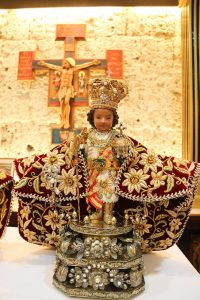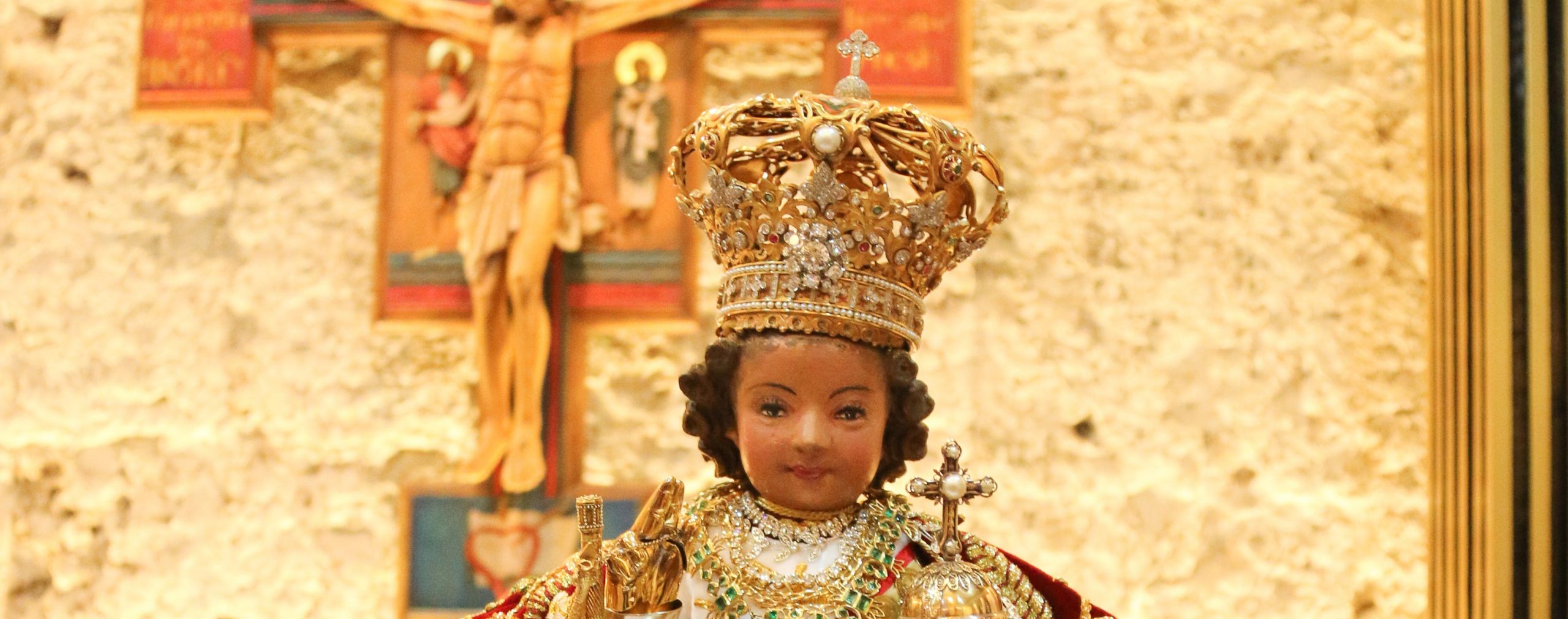Source:Sonrisas en el camino
Facts that start traditions
It is curious what happens in history, the twists and turns it keeps for us to discover with astonishment surprising facts that even today continue to mark the rhythm of a city or nation. It is curious how small gestures mark epochs and create tradition. And so it happened with the Santo Niño of Cebu, in the Philippines, but what does Magellan have to do with it?
Magellan, on his great voyage, on his grandiose expedition to reach the Moluccan islands to gain access to the spice market, came across one of the islands of the great archipelago of the Philippines: Cebu. It was 14 April 1521 and a christening ceremony was prepared. Rajah Humabon, together with his wife Humamay, will be baptised into the Christian faith and along with them, hundreds of locals. It is a special date.
The gift of the Santo Niño of Cebu
With great pomp, the king of the place takes the name of Carlos and his wife the name of Juana. Magellan, satisfied with his mission to Christianise the land, gave the newly baptised Juana a carving of a baby Jesus, holding in his left hand a golden sphere representing the world. This was the first Christian image to reach the Philippines. Antonio de Pigafetta tells the story perfectly.
After that baptism, Magellan, full of pride and disregarding the instructions received in Spain, interfered in the relations of those kingdoms and attacked a neighbouring island that was bothering Humabon. Blindly confident in his armament, he did not see the blow or the treachery coming. That move brought dire consequences.
 The miraculous find
The miraculous find
But back to the Santo Niño of Cebu, from that moment on the image was lost track of. It was either placed among pagan idols or destroyed. Nothing more was known of the image until Juan de Camús, a sailor on the expedition of Miguel López de Legazpi, in 1565 (44 years later) found it in the house of a main Indian. It was in a box tied with Castilian twine. The find was greatly celebrated. Everyone worshipped it on their knees and wept with joy. It was a sign, a miracle. The Augustinian friar Fray Gaspar de San Agustín describes it perfectly at the end of the 16th century:
“The sailor Juan de Camús went into the house of one of the principal Indians… he found another box tied with Castilian twine, inside the carving of an Infant Jesus. Everyone came to the house, and the General venerated it, kneeling on his knees, shedding many tears and with singular affectionate devotion”.
A well-intentioned gift, forgetfulness, and a chance meeting several years later. A devotion that has been recovered and which is still going strong in Cebu, because after the discovery a church was ordered to be built and it is strongly venerated there. In every house, no matter how humble, the image of the child that Magellan gave to Humabon’s wife 500 years ago is present. Events that mark destiny and are rooted in tradition.
Share this article
On This Day
- 1572 Andrés Díaz Venero de Leyva founded the town of Guaduas (Colombia).
- 1578 Brunei becomes a vassal state of Spain.
- 1672 Spanish comic actor Cosme Pérez ("Juan Rana") dies.
- 1693 Painter Claudio Coello dies.
- 1702 The Marquis de la Ensenada was born.
- 1741 Spanish troops break the siege of castle San Felipe in Cartagena de Indias (Colombia).
- 1844 The Royal Order of Access to Historical Archives was promulgated.
- 1898 President Mckinley signed the Joint Resolution, an ultimatum to Spain, which would lead to the Spanish–American War.
History of Spain
26 August 2020
27 January 2021
Communism: Now and Then
23 December 2022
28 July 2021







